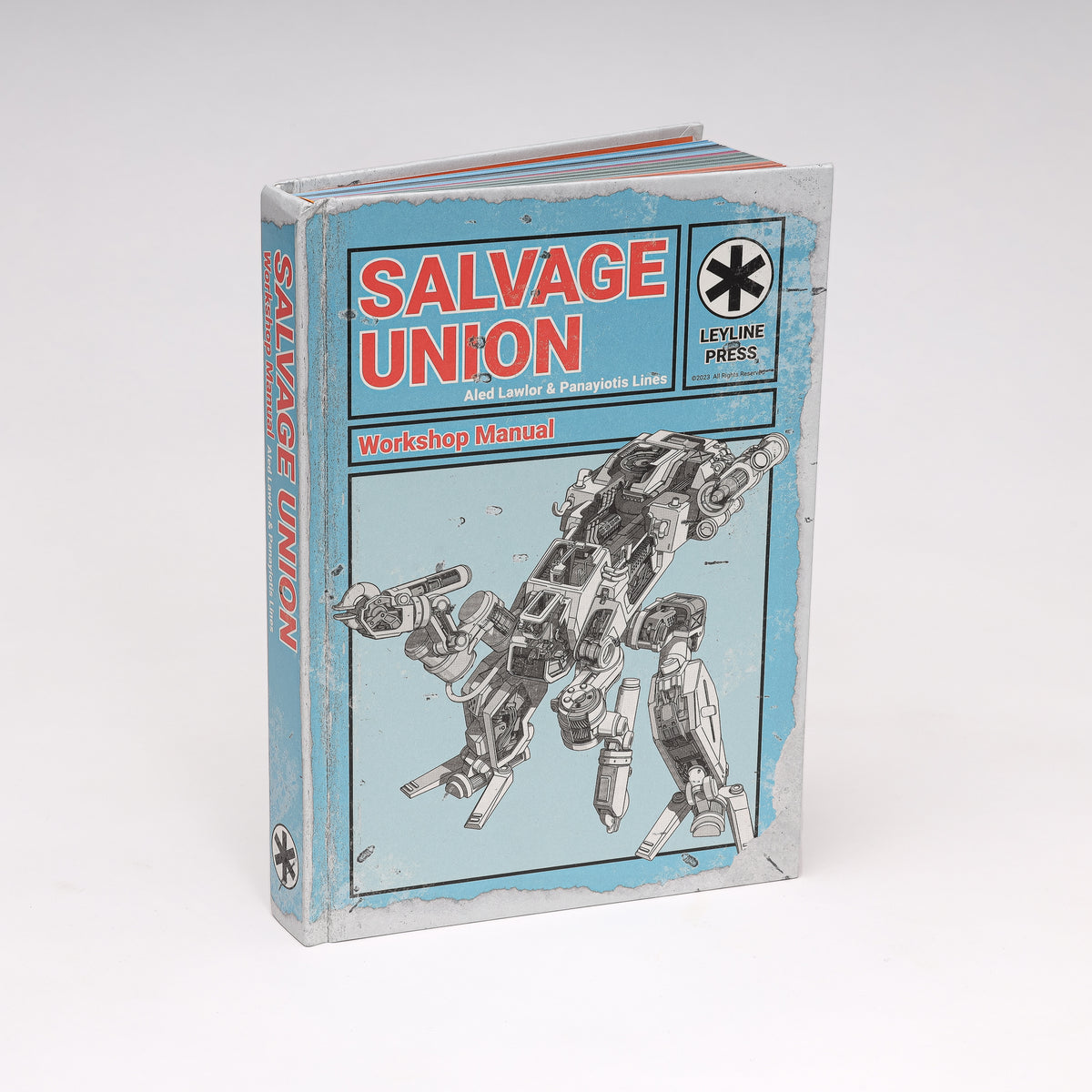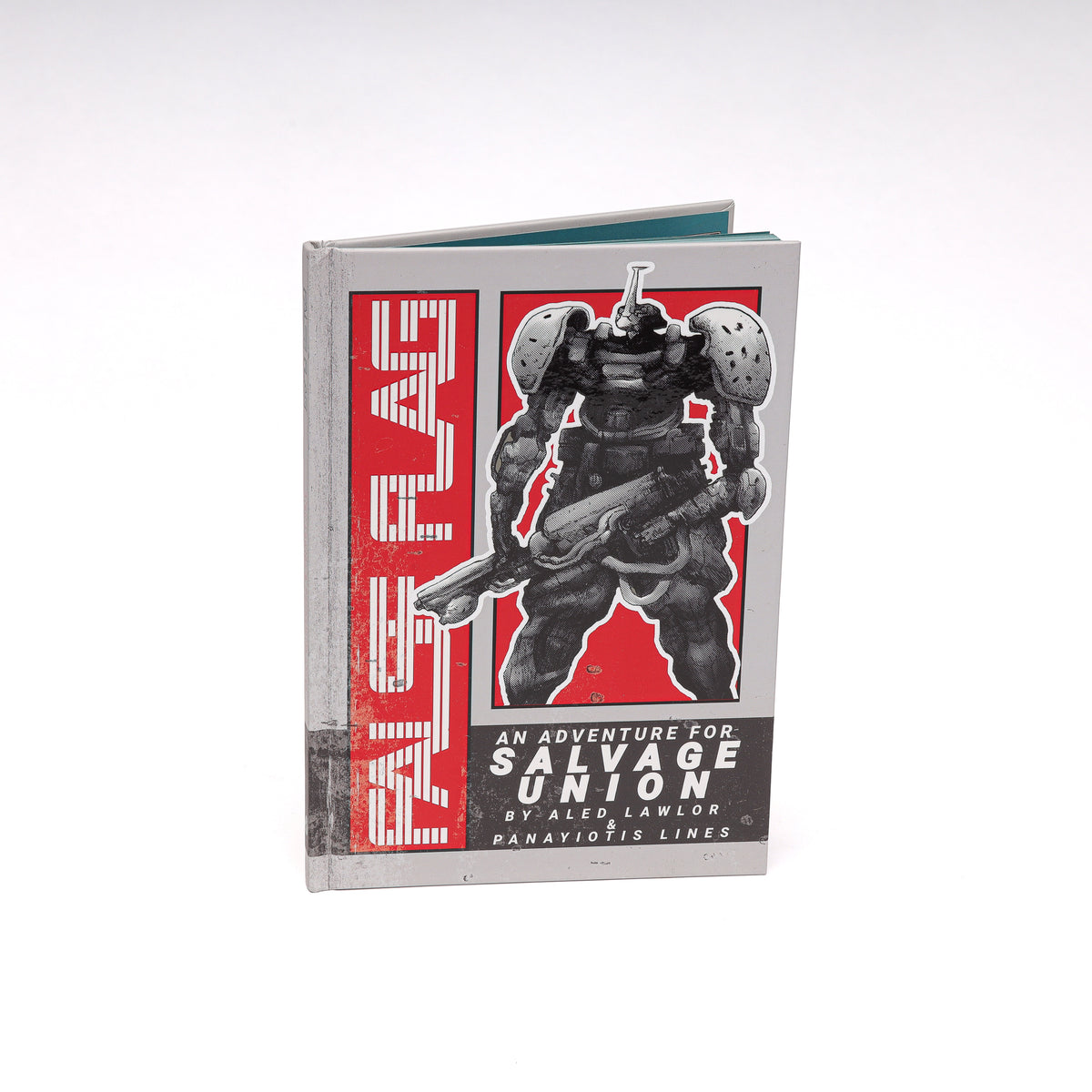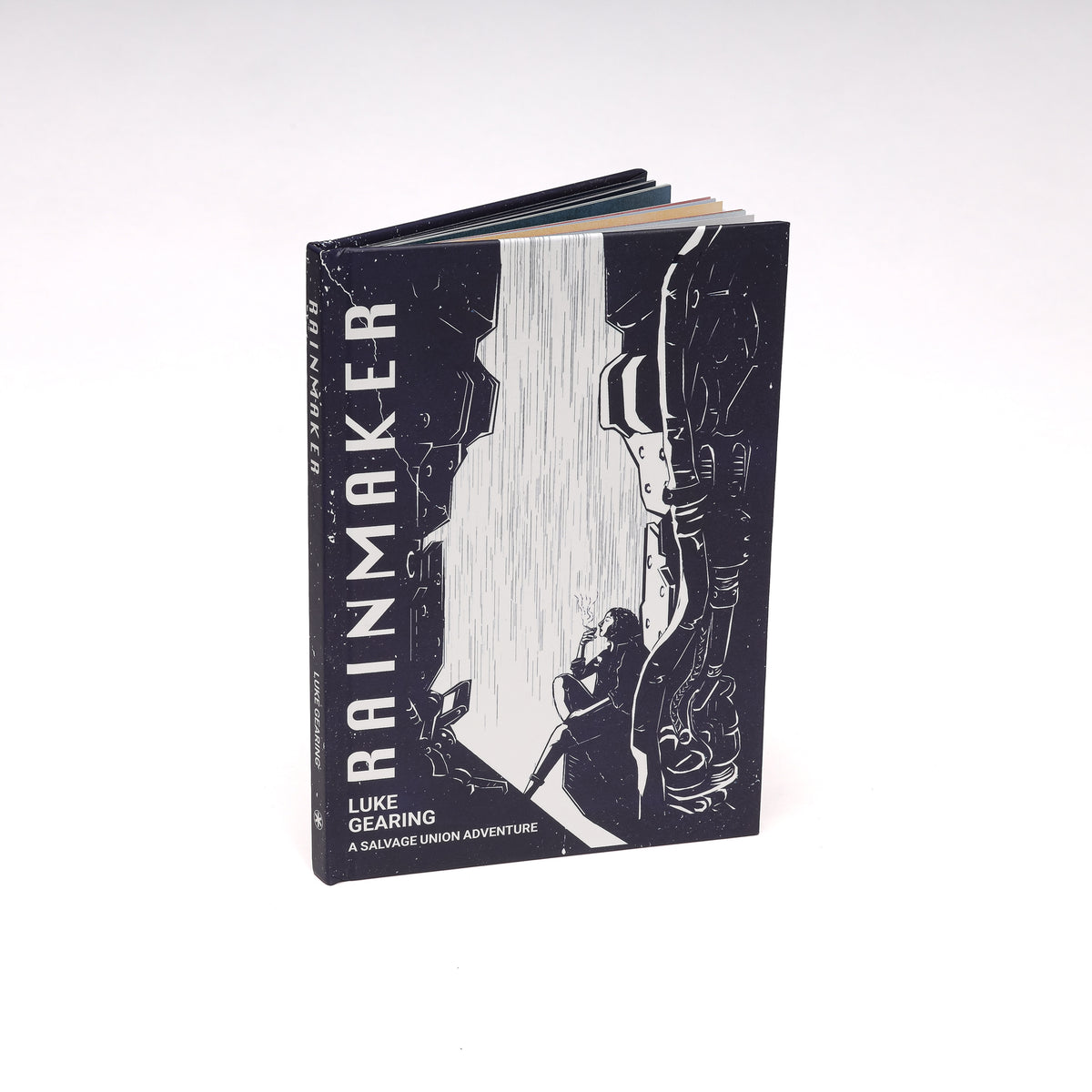Labyrinth Lord by Goblinoid Games was one of the earliest old school D&D retro clones, released on 2007. Early retroclones such as Labyrinth Lord birthed out of a realisation that the Open Gaming License set out by Wizard's of the Coast could be used to effectively reprint the original editions of Dungeons and Dragons. This was a means to keep these rules sets alive and be able to produce new compatible adventures and content for them. Users on forums such as Dragonsfoot were some of the first to discuss these ideas and this led to systems such as Labyrinth Lord being conceived.
As the foreword of Labyrinth Lord states.
" This work follows the idea that game rules themselves are not subject to copyright, only the specific presentation of those rules are. The goal of Labyrinth Lord and other retro-clone systems is to make rules currently available, using a common reference, for third-party publishers to create gaming material that is not only compatible with the particular retro-clone system, but also with the system which it seeks to emulate. By doing this we hope to help build a market for games that have otherwise been allowed to fade into the past. For further information, please visit our website at www.goblinoidgames.com."
From these early systems and sentiments we see the entire OSR scene begin to emerge.

The rules contents for Labyrinth Lord are comprehensive. They focus primarily on what would have been in the Moldvay Basic & Expert sets and expanded it with elements from BECMI and some minor elements from AD&D. The rules cover the full gamut of dungeon crawling and wilderness exploration rules as well as character creation, combat, spell lists, a list of monsters, treasure, strongholds and even adventures at sea and aerial combat rules.
Labyrinth Lord is not attempting to be a perfectly faithful clone of a specific edition, such as how Old School Essentials attempts to faithfully recreate Moldvay Basic & Expert. Instead it sets out to create a rules set that allows tabletop gamers to run both old classic content and create new content with a fresh set of rules that is easily reference. It contains numerous minor differences within its rules to the originals and additional content drawn from the wider milieu of D&D. In part this may have been at the time to avoid any potential legal issues as there was still some concern at the time that retro clones as they were being printed wouldn't be covered by the OGL.
It may have also been that Labyrinth Lord simply didn't need to be entirely faithful to B/X or BECMI, with close enough working well enough.
The changes it does have are relatively minor throughout. Dwarves need 2187 XP to progress to 2nd level instead of 2200 XP, many of the other classes XP charts differ as well in minor ways. The weapon and armour list is expanded with the inclusion of the Bastard Sword, Heavy Flail and Scale Mail armour to name a few. There's some additional equipment in that respect too such as the Spade and Miner's Pick. Certain rules in respect to weapons such as the 'Slow' trait have also been removed.

Labyrinth Lord has a familiar core. Character creation is the classic 3d6 down the line, with the traditional 6 ability scores (Str, Dex, Con, Int, Wis, Cha.) The game orders them in this manner too which is the way favoured by newer editions from 3e onwards compared to the original ordering of (Str,Int,Wis,Dex,Con,Cha). The intent of this original ordering of stats seems to be to put the prime requisites stats first and as they have fallen by the wayside as has the ordering with even systems like Labyrinth Lord which do include prime requisite rules using the familiar ordering of stats.
There's 7 classes to choose from. Four of these are human the Fighter, Cleric, Thief and Magic User. There's also 3 demi-human classes the Halfling, Dwarf and Elf. All of these have the familiar gamut of abilities which remain for the most part the same though there is some variation.
The Thief has a d100 table of skills including Pick Locks, Find and Remove Traps, Climb Walls and Hide in the Shadows. There's some changes to the odds, for example B/X gives the Thief a 10% chance of success to Find and Remove Traps whereas Labyrinth Lord gives them a 14% chance.

The Cleric gains a spell at first level in Labyrinth Lord whereas in B/X and BECMI they did not. They also still get access to Turn Undead which works slightly differently. The range of levels it affects goes up to 14+ and have a slight modification in their odds, also monsters with a special ability aren't included as a separate category as they are in B/X.
The Fighter still gets a d8 hit die, solid attack value that's shared with the Dwarf, Elf and Halfling and can use all weapons and armour in the game. At 15th level they also get an additional attack. There is a similar rule in BECMI whereby a Fighter will gain an additional attack at 12th, 24th and 36th level.
The Magic User gets spell access but restrictions on pretty much all armour and weapons and a 1d4 hit die. Magic in Labyrinth Lord uses the Vancian system and the spell list goes up to level 9 for Magic Users and level 7 for Clerics. In Basic & Expert originally this capped out at level 6 and level 5 respectively. The additional spells such as the 9th level Magic-User spell Power Word Kill and the 7th level Cleric Spell earthquake are drawn from BECMI, specifically the Companion rules set. Spellcaster progression also slightly differs, more in line with the AD&D values than the B/X values.

Dwarves, Elves and Halflings all retain their various specialised abilities. Dwarves have infravision and a 2/6 chance of detecting traps, false walls, hidden constructions and noticing slopes in passages but restrictions on using two handed weapons. Elves have access to spellcasting as well as infravision and a 2/6 chance to detect secret doors. Halflings have a 90% ability to hide in the wilderness, a +1 increase to initiative and missile attacks and -2 to their AC when attacked by larger foes as well as restrictions on two handed weapons. There's some minor variance in wording in places but for the most part this is all pretty faithful.
Each class also has their own unique saving throw table. Labyrinth Lord uses the 5 classic saving throws of Breath Attacks, Poison or Death, Petrify or Paralyze, Wands and Spells or Spell-like Devices. These follow the same values as in the original sets.
Each class also has a prime requisite which provides a percentage boost to XP if a class has one of their statistics at a certain level.
The human classes level up to 20 and the demi-human classes level up to 10, this differs from Basic & Expert where human classes topped out at 14 and demi-human classes at 8. 20 is the level cap introduced across all classes in 3rd Edition Dungeons & Dragons and remains the same in 5th Edition, with 4th Edition increasing it to 30. In terms of the original editions the Companion Set would allow players to play up to level 25 with human classes and ultimately the entire BECMI set would run from levels 1 to levels 36.

Labyrinth Lord handles combat via a form of THAC0 with an Attack Table as true to the original and doesn't provide any conversion rules for Ascending AC as other retroclones such as Old School Essentials do.
Players progress in the game by earning XP which is primarily earned by finding gold pieces with each gold piece equalling 1 XP, though slaying monsters can earn experience points as well. Encumbrance uses lbs rather than coin weight as in B/X and all the equipment has its own value in lbs.
Labyrinth Lord further includes rules for retainers and morale, a staple of old school play, there's some minor extrapolation of the original rules here.
Retainers have to roll a morale check at the end of every adventure and if they fail they wont join the character again on an adventure. This mechanism did exist in the original basic sets but was left a lot more ambiguous as to when it should be applied. There's further an expanded list of mercenaries and specialists drawn from multiple editions including a Sage, Engineer, Seafarer and Wolf Mounted Goblin! The wolf mounted goblin appeared in B/X as well and the author can only imagine that the writers of the time had an excess of wolf mounted goblin miniatures.

There's also a list of monsters within the core book which cover a broad and familiar staple from Giants and Trolls to Goblins and Gnolls. As with other retroclones certain monsters that are covered by copyright such as the Carrion Crawler are included but renamed, in this case to the Carrion Scavenger. All these monsters are laid out in a similar fashion to how they are in the original sets and for the most part remain the same.
Treasure Types for monsters have been subtly tweaked, they're called Treasure Hoards now and their values are in Roman Numerals. They still split into individual treasures and treasure hoards. They output slightly different results to the values in B/X but broadly the 'gygaxian naturalism' logic remains the same with creatures like slimes dropping no treasure, monsters like Gray Worms typically dropping stuff they've got from eaten adventurers and humanoid monsters like Orcs and Gnolls having a wide variety of treasures hidden away.

Labyrinth Lord as intended paved the way for many modules to be created that are compatible with the system. One of the more popular of these is the megadungeon adventure known as Stonehell. It invites players to explore a sprawling, 9 layer, dungeon complex, each split into 4 huge sub sections as well as additional exterior areas. It's an incredibly well designed dungeon, presented in a clean and easy to read and run format that oozes old school aesthetic. It's existence was only likely possible because Labyrinth Lord existed as a system and is a reminder of how important being able to keep these old rules sets alive is in encouraging creatives to create new content for them.

Labyrinth Lord though 15 years old now still offers a well presented and robust retroclone system that covers everything you'd need to play old school D&D. It has a few minor variations to the original rules sets and combines core elements of B/X and BECMI with a smattering of AD&D and d20 systems but for the most part remains faithful to the original basic sets of the early 80s. It can be used equally to run new content as well as classic adventures and can be picked up from Goblinoid Games here.
*This article used the revised edition of Labyrinth Lord released in 2009.

Thanks for reading! If you're interested in a trio of old school fantasy adventures check out Albion Tales.
Subscribe to the Leyline Press newsletter here to receive updates on our blogs, promotions, games and more.
Follow us on twitter @leylinepress
Follow us on facebook @leylinepress
Follow us on instagram @leylinepress
Subscribe to this blogs RSS feed by pasting this into your feed reader - https://leyline.press/blogs/leyline-press-blog.atom
This article was originally written for https://www.osrelfgame.com/






0 comments